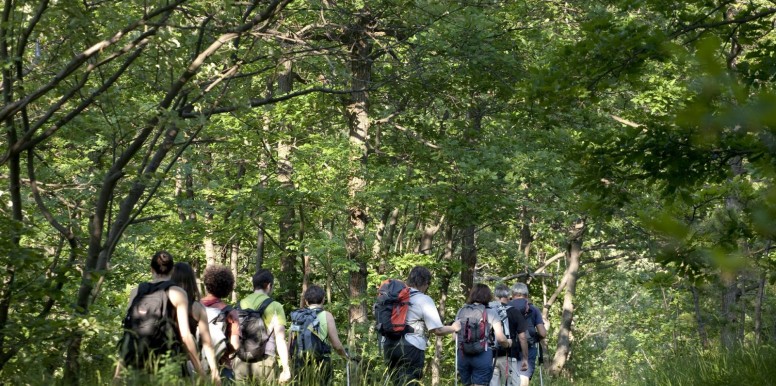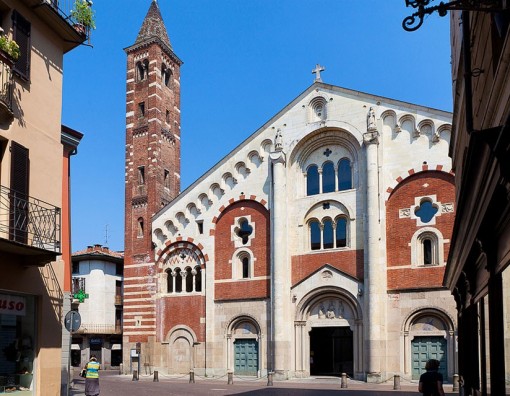The territory of the new Park and Contiguous Area of Alta Val Borbera is partially included in the Special Area of Conservation (SAC) called “Antola Massif, Mount Carmo, Mount Legnà: they are all SAC established under the Habitats Directive which contribute to the realisation of the Natura 2000 network, a European ecological network of sites identified for the purpose of preserving the biodiversity in Europe. The SAC of Alta Val Borbera is located at an altitude of between 600 and 1669 metres and occupies part of the sector of the headwater of the Borbera Torrent, corresponding to the river basins of the Agnellasca and Gordenella torrent, approximately bounded by the ridge line which starting from Mount Porreio (1533 m) arrives to the Peak of Erta (1020 m), passing by the peaks of Mount Legna (1669m), Mount Carmo (1640m) and Mount Antola (1597m). The landscape is that typical of Apennine valleys formed on a relatively soft calcareous matrix: this has permitted the formation of both rounded ridges but also steep slopes, locally interested by gullies. The Site is the only example in Piedmont of Mediterranean mountain silvo-pastoral environment that allows the presence of Mediterranean vegetation in mosaic with that of microthermal vegetation (which lives at low temperatures) and by the presence in several impluvia of mesophilous trees. An extended and continuous woodland occupies more than three quarters of the surface. The forest vegetation is composed primarily of beech woods at the higher altitudes of the slopes, then chestnuts, hop-hornbeam, turkey oak and downy oak (Quercus pubescens). Grasslands and meadow-pastures are fragmented in areas of a limited size where sheep farming is still active: if sheep farming and animal rearing has considerably reduced compared to the past, the abandonment of farming is to be considered almost complete. The high value of biodiversity of the area. Among the environments inserted into the Habitat Directive, the most important is represented by the xeric grasslands with Bromus erectus, priority habitat because it hosts a rich population of orchids. Among the Directive habitats, characterised by a good representation and good degree of conservation, are the heaths, tall grasses, chestnut and eutrophic beech forests which are the largest environment. The flora is interesting at the higher altitudes with the presence of relict Alpine species such as Vaccinium gaultherioides, Homogyne alpina, Vaccinium vitis-idaea, Gentiana kochiana. Among the rarest species, the presence of Anogramma leptophylla, Aremonia agrimonoides, Corallorhiza trifida, Omphalodes verna, Peucedanum schottii has been reported. These have been inserted into the regional Red List. Tulipa australis is also present and indicated as vulnerable in the Italian Red List. The fauna, on the other hand, distinguishes itself for the presence of rare and localised species. The Canis lupus wolf has been a stable presence for at least twenty years. It is monitored within the scope of the Progetto Lupo Piemonte from 2004 to 2012 and which today needs the definition of a local action plan which includes in detail threats, management interventions (including planning and indirect control of damage to livestock) and the programming of activities which are carried out under the Centro referenza Grandi Carnivori, of which the Management Board of the Protected Areas of the Piedmontese Apennine is an associated partner. More recent, but equally interesting, are the reports of porcupine (Hystrix cristata) while the bats, all protected by the Habitat Directive, are present with six species: barbastella (Barbastella barbastellus), Daubenton’s bat (Myotis daubentonii), Leisler’s bat (Nyctalus leisleri), common pipistrelle (Pipistrellus pipistrellus), greater horseshoe bat (Rhinolophus ferrumequinum) lesser horseshoe bat (Rhinolophus hipposideros) of which a small reproductive colony of 10-20 females is present in an abandoned building of Chiapparo in the municipality of Carrega, known since 2012. There are several species of amphibians present of community interest such as: spectacled salamander (Salamandrina terdigitata) and the Italian stream frog (Rana italica), whose presence in Piedmont is documented only in this narrow area of the Apennine of Alessandria; the North-west Italian cava salamander (Speleomantes strinatii) which is equally rare but present also in several zones of the Maritime Alps. Among the reptiles, there are other rare species: the dice snack (Natrix tessellata), the smooth snake (Coronella austriaca), the Aesulapian snake (Zamenis longissimus) The birds have four species inserted in the Bird Directive: the lesser grey shrike (Lanius collurio), the European nightjar (Caprimulgus europaeus), ortolan bunting (Emberiza hortulana) and the wood lark (Lullula arborea), all nesting birds.
Information and contacts
Telephone: +39 (0143) 684.777
Telephone 2: +39 (0143) 877.825
Link
https://www.areeprotetteappenninopiemontese.it/index.php?option=com_content&view=article&id=4147&Itemid=327





